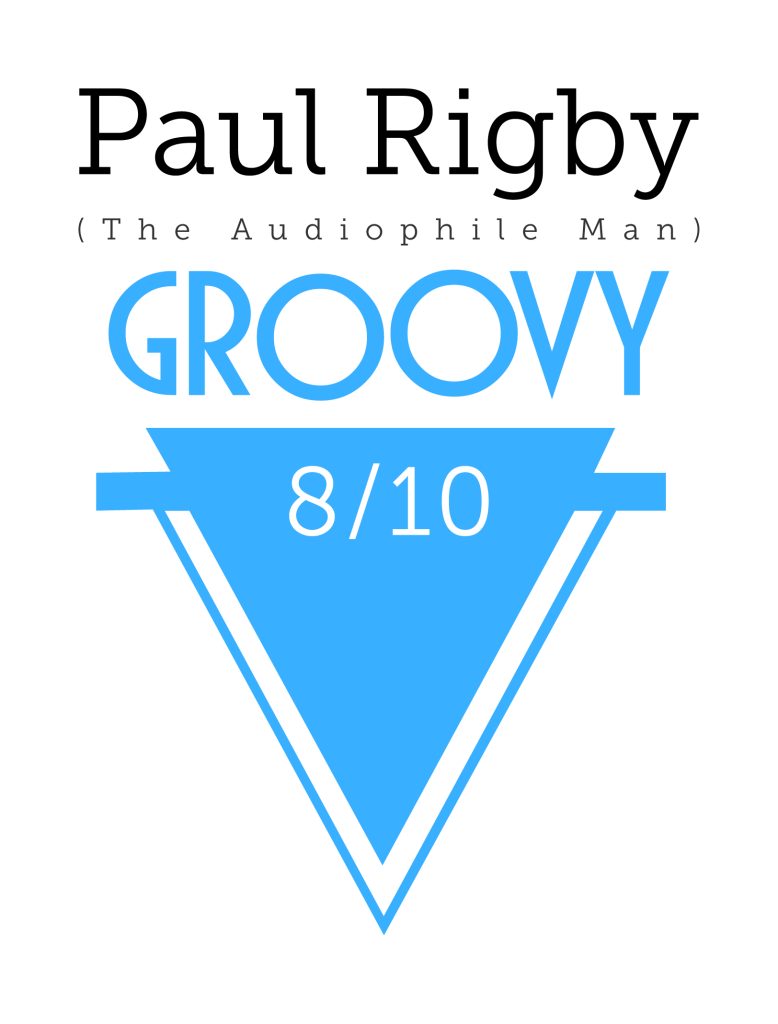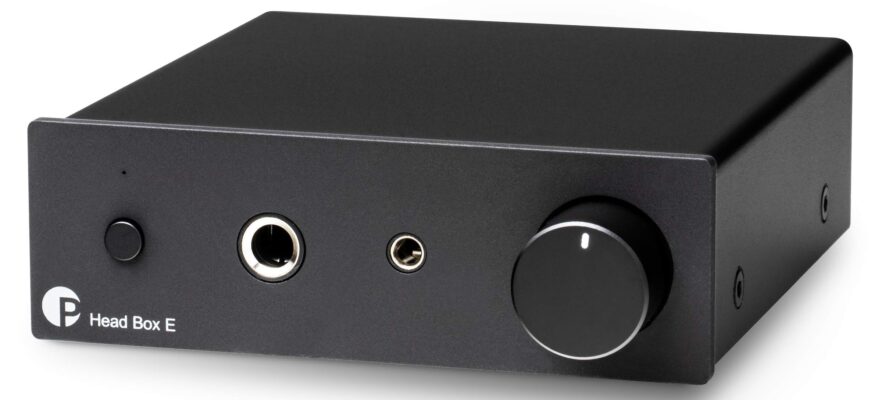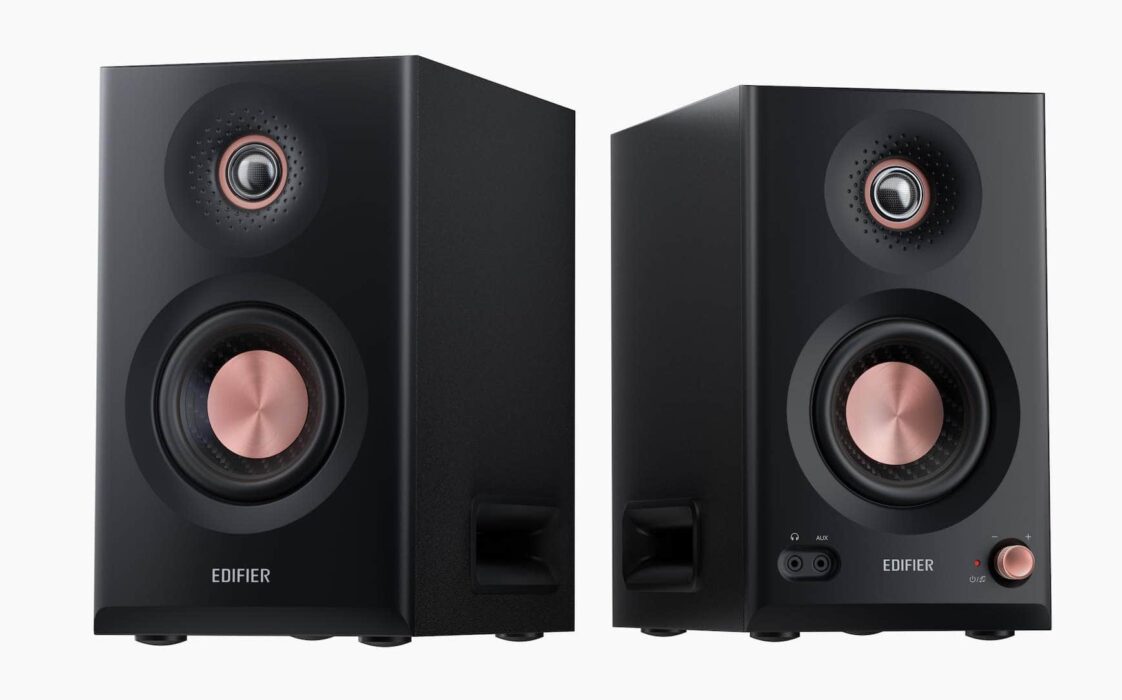The Article
GJALLARHORN AMPLIFIER FROM SCHIIT
18th October 2023
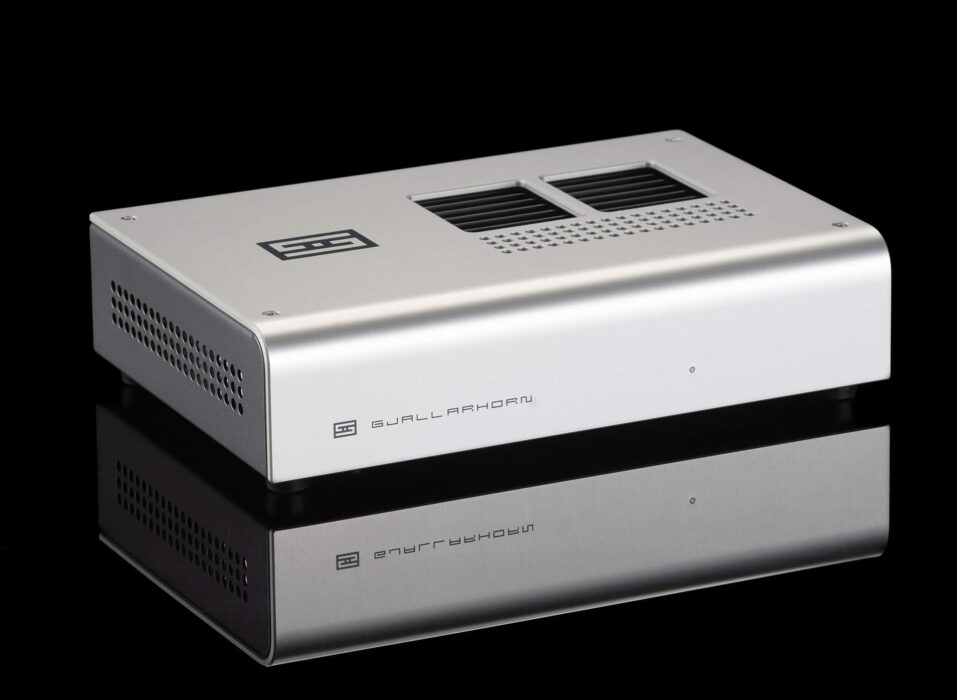
It’s just a little thing (a Norse word) that’s currently for sale (another Norse word). Should you run (a third Norse word) to click the buy button and choose (there’s a fourth) this little amplifier? Paul Rigby is happy (and that’s five) to offer his thoughts
No. It’s not Gall-A-Horn. Well, you call it what you want but that ain’t the intention. I believe this amplifier is pronounced Yalla-Hore. It is a Norse word, which is a common theme for this American company where there’s a general Norse thing going on, of course.

In Norse mythology, the Gjallarhorn was owned by the god Heimdall.
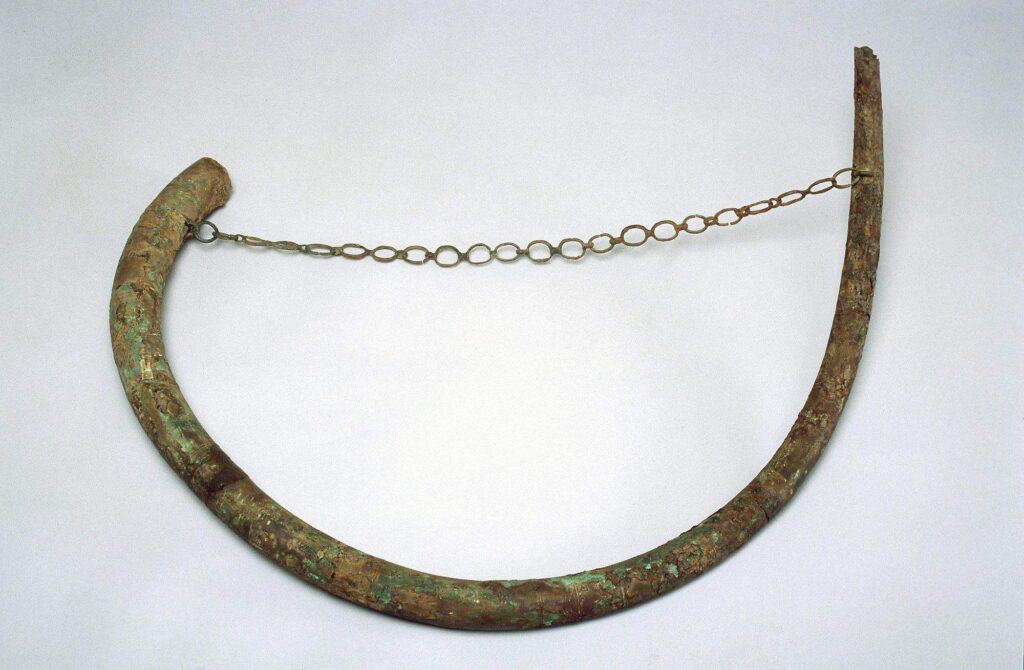
He liked to keep an eye open for invaders. He used the Gjallarhorn as an early-warning system.
This was the thing that he would blow, it would sound, before Ragnarok took place. Ragnarok, the end of all things.
So Gjallarhorn was the modern-day equivalent of the 4-minute warning, you might say.
Question is, now I have warned you about the existence of this amplifier, how will it perform? At the end of this review, will you be blowing your own horn in celebration or will it, like events after that 4-minute warning, bomb. Let’s see.
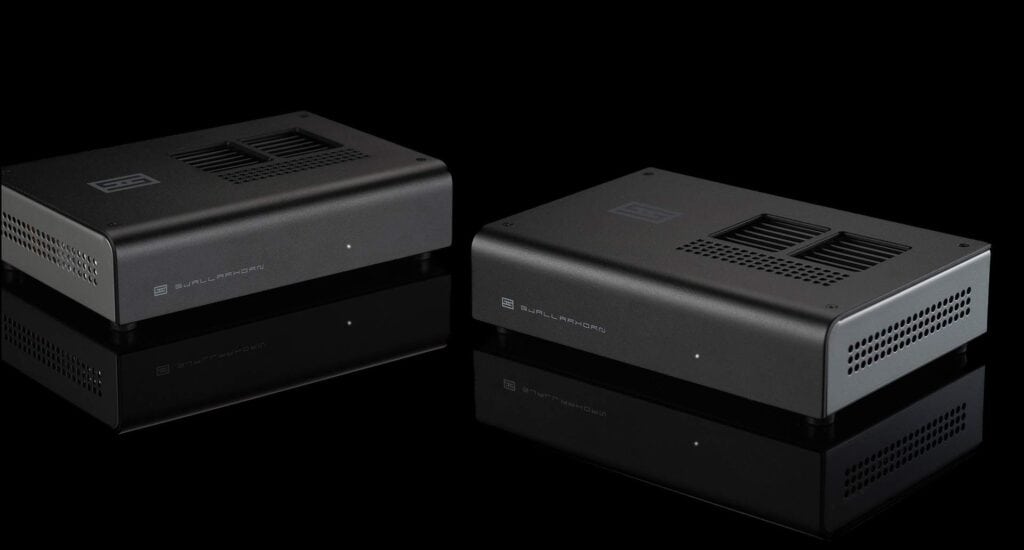
Oh and hang on. One thing? I noticed an odd thing. The company doesn’t actually say what genre this box fits within. On the company website you’re told that the Gjallarhorn is an amplifier, it has this and that power rating, etc.
Funnier still, when others talk about it on the Internet in forums or even reviews, everyone follows suit. No-one that I have seen has actually come out and said that this is a power amplifier. That’s what this is. It’s not an integrated, it’s not a pre amp. It’s a power amplifier. And because of that, you will need to add pre amp facilities to it. Your volume knob? It ain’t here folks. You’re going to connect that to this box with a cable or cables. We’ll talk about that in a minute.
DETAILS DETAILS
This is a small-footprint unit spanning just 9” x 6” x 2.5” (230 x 152 x 66mm approx.) and weighing in at – and this surprised the bejesus out of me – a whopping eight pounds. That’s over 3.5kg.
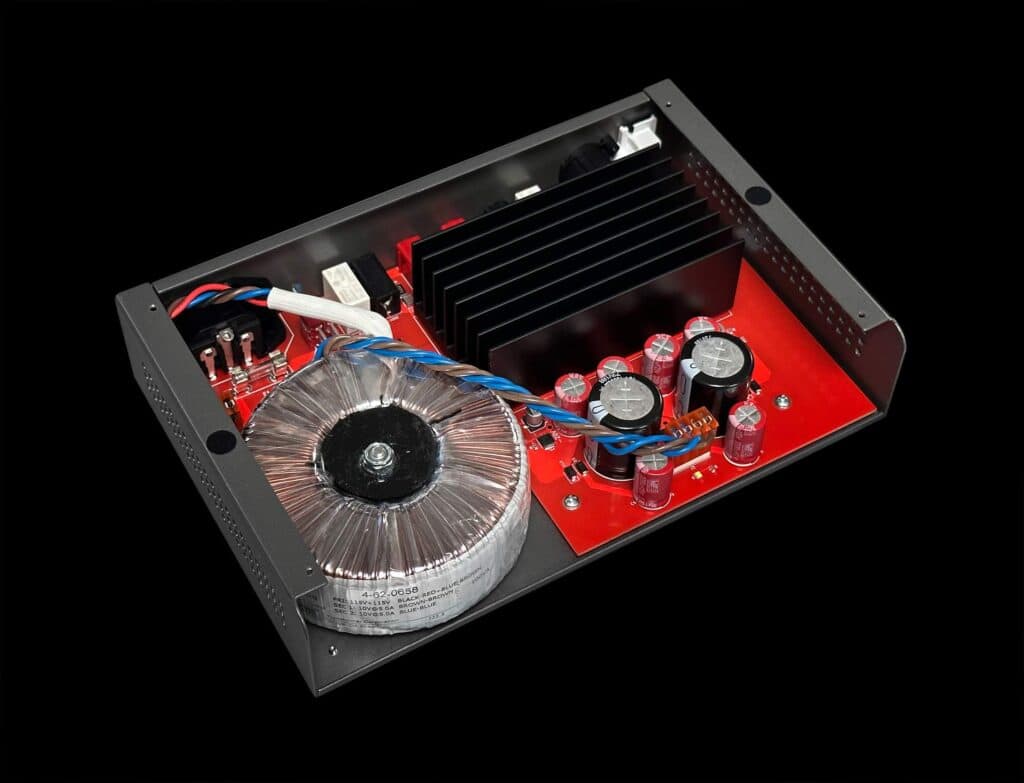
When I lifted this thing out of the box I completely misjudged the weight, didn’t brace myself and nearly wrenched my wrist. For the size? This thing is heavy. More so when you compare this amplifier to your common-or-garden Class D featherlite offering.
And that’s another thing. This is not a Class D amplifier. It’s a fully linear, Class A/B amplifier. There’s a whopping great transformer in there, which is where the weight derives from.
This little box pushes out 10W. And look, the company discusses the ‘But will it play loud?” question because people will be use this box in wildly different environments and circumstances. I wouldn’t recommend using the Gjallarhorn in a big room but I’ll give it a go, nevertheless. We’ll see.
Let’s take a quick tour. On the front is a power light. And…that’s it. Note, to repeat, there is no volume control. Whatever you plug this thing into will have to provide that. I used two DACs in this review, for example. Both included their own pre-amp section, their own gain controls.
On top of the Gjallarhorn are cooling vents. That’s that. The rear is busier. From left to right, you will find a single pair of RCA inputs. Hence, you can run a turntable or CD or a DAC or whatever but not at the same time.
Next to that is a balanced XLR output. Hence, if you run a pre-amplifier, you can attached two of these Gjallarhorn amplifiers to it and run them as monoblocks. I might very well do a review on that variant in the future.
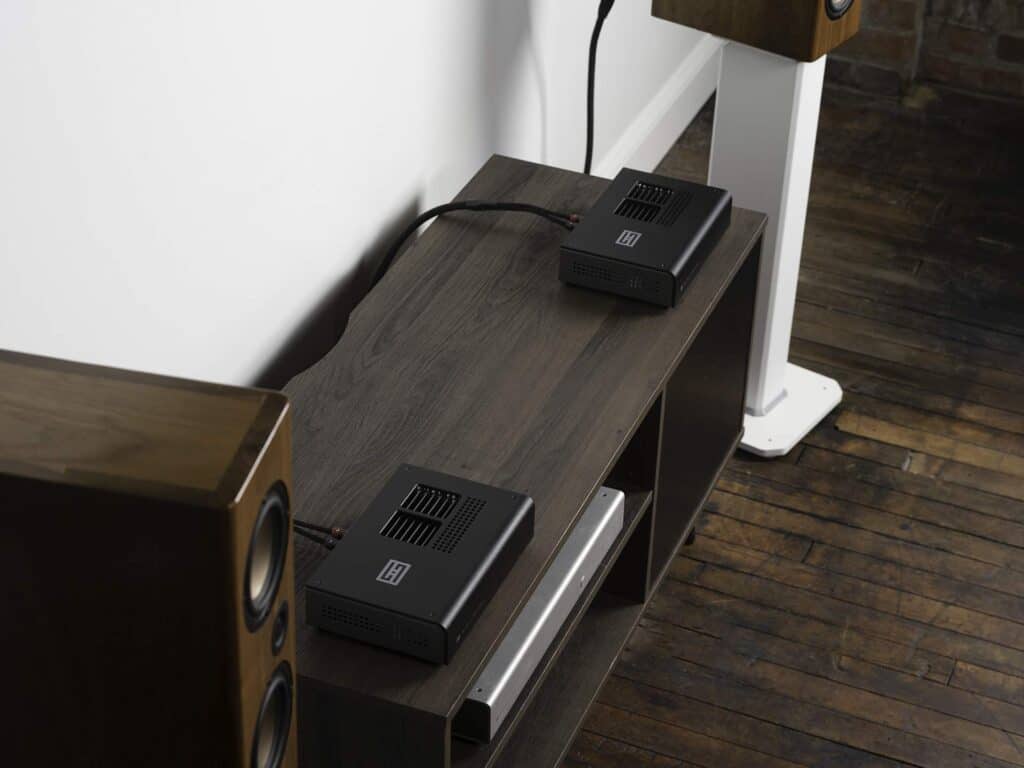
Next are four speaker connectors. Simplified, I guess, to keep down the costs, for banana plugs only. The nature of these sockets also keeps the footprint down to a bare minimum too because chunky binding posts take up space.
Then we have a very nice toggle switch power switch and yes, a big old IEC power socket. And that’s it. Done.
So how does it sound?
SOUND QUALITY
I tried this amplifier in two systems of mine. My reference listening room system and a small-room, near-ish field system. Both offer contrasting listening conditions. Both would challenge any amplifier.
For the main listening room I dragged in an old amplifier of mine, a Cambridge 651A integrated from my deep, distant past. Actually, it’s about time this box had a run out. It’s been sitting under a layer of dust for too long.
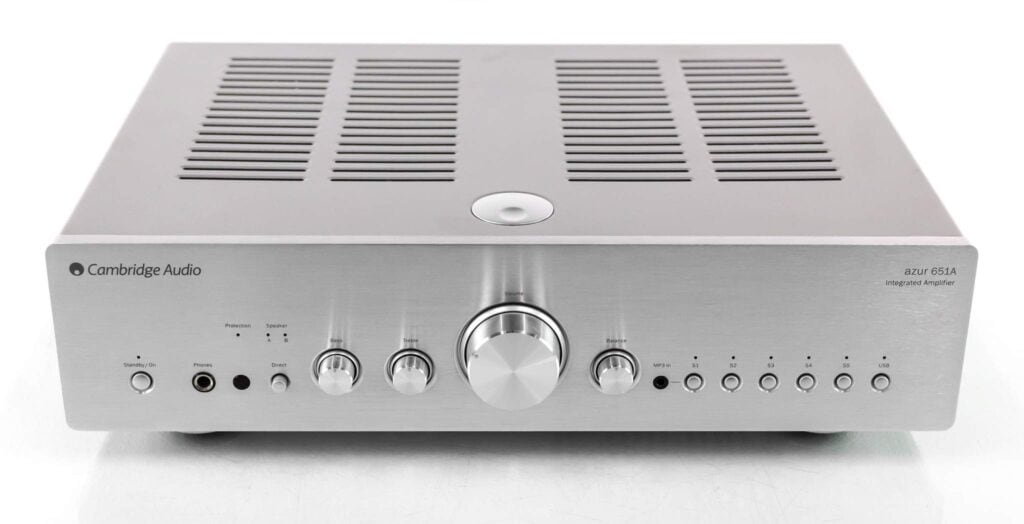
This one is better than the regulation model as it’s had upgraded Op-Amps fitted within plus other tweaks. Even so, this sort of amplifier is an ideal comparison. Many potential customers may be considering upgrading from an old amplifier to the Gjallarhorn or, alternatively, for their small room system, they might be thinking of saving cash by raiding eBay and buying second hand instead. So this is a real-world comparison, you might say.
I also grabbed some low-cost Tellurium Q Blue II speaker cables and the Q Acoustic 5020 speakers were still around from their recent review so they were roped in too.

I started with CD and played a song from Glen Campbell and his big hit, Rhinestone Cowboy. That was played via my Audiolab 6000CDT and Benchmark DAC.
To remind you then, we have the vocal, strings appear in the background, percussion, secondary percussion, acoustic and electric guitar, bass, piano and an electric piano, perhaps? There’s something else in there. Anyway, it’s a busy soundstage and there’s lots for any amplifier to unpick here.
BIG-ROOM LISTENING
Question one then, does it fill a room? Yes, yes it does. This is not an ideal position for the Gjallarhorn, I repeat. Even so, I have a relatively large listening room of around 6 x 7m and I had no problem. But this is a small amplifier. So yes it works. It makes a big noise. But. But the sense of depth and the bigness of a standard, large amplifier just isn’t there. Because it pushes out just 10W, it strains a bit. That sense of power in reserve, that relaxed yet potent force. It’s not there. In a larger room? Watts matter.
Another but, and I have to emphasise this point, the Gjallarhorn made a good fist of it. Sure, bass moves only so far down the road, the richness of midrange detail doesn’t have quite the same insight and so on. But if you had a smaller room than mine. Something average – at least in the UK. Say 3 x 4m? That would improve the sound a lot because the Gjallarhorn wouldn’t have to try as much.
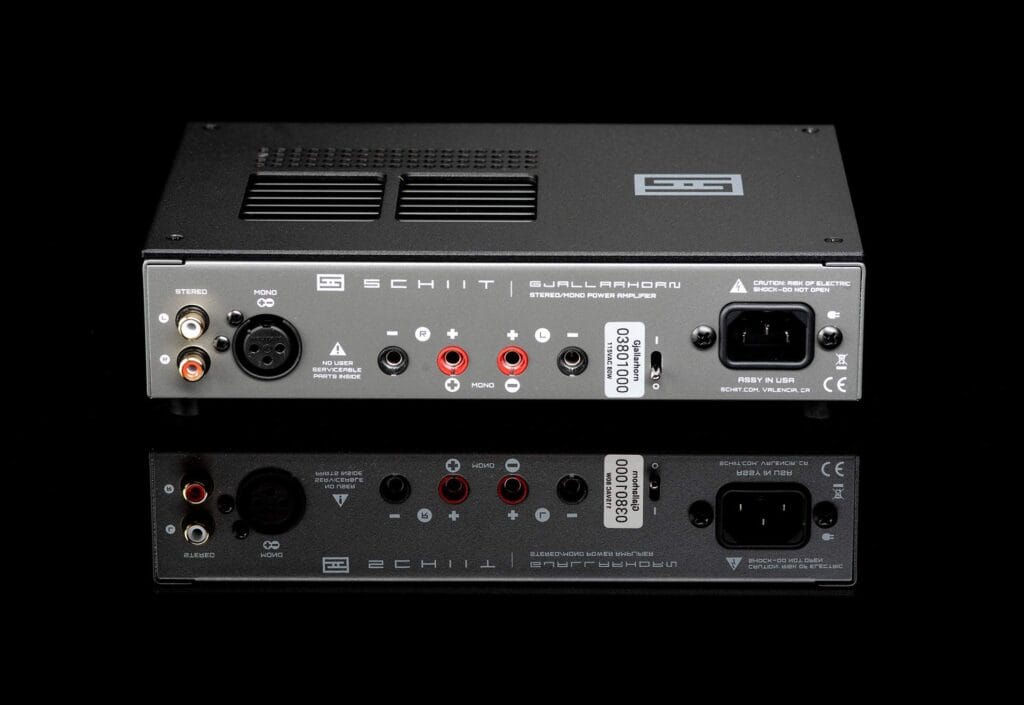
Even so, in my large arena? There was an impressive instrumental separation. There was real space in between instruments. The midrange offered impressive space while the soundstage was expansive.
So that’s a worse case scenario. Really? This amplifier is not designed for that room, it’s designed for a smaller room and a rather nearer-field setup. So I moved to such a room, around 3 x 4m, 3 x 3m something like that.
SMALL-ROOM LISTENING
Inside is a sort of man-cave thing going on. In there, I had an older 1080p HD Samsung TV, hooked up to that is a Topping E30 DAC, Chord cabling, an older Brio-R integrated amplifier from Rega and a pair of S3/5R speakers from Spendor on a set of Blue Horizon isolation feet for those. I replaced the Rega, allowed the Topping to provide pre-amp facilities and gave the Gjallarhorn a run.

I then popped in the Blu-ray version of ELO’s Out of the Blue – Live At Wembley, one of the better-produced live concerts I’ve heard from the time, turned up the volume and waited via the tracks Standin’ in the Rain (this track doesn’t get the attention it deserves and incidentally? A stunning lead-in sequence towards the vocal) and Night in the City.
The results? I was impressed. This performance was big, it swamped the senses, it spouted bombast. This is a performance of heroic proportions and the Gjallarhorn handled the lot – all of it. It was a performance worthy to accompany the Valkyries.
The soundstage was wider and cleaner than the Brio, it provided a bigger bass performance than the Brio, it separated the instruments in a more efficient manner and thus enhanced the clarity further than the Brio. And let me say this, the Brio is a classic audiophile amplifier that I would hook up to my main system any day of the week but, as I am apt to say, use the right tools for the job.
HOME FROM HOME
The Gjallarhorn is made for this sort of playback, this kind of environment and it really shows, let me tell you. The Gjallarhorn picks the right frequencies and it pushes those slightly towards the ear. It takes the essentials of any performance and runs with them so you find yourself getting wrapped up in the music. I spent more time singing along with the song Turn to Stone than listening to the blasted thing, for example.

I then switched to a more modern audio presentation and listened to the Blu-ray soundtrack from the animated version of The Clone Wars, the Star Wars production and the full orchestral presentation of that. I liked the focus around the brass instruments, the tight, impactful bass and the overall balanced presentation. Later, listening to a single episode, I was impressed with the articulation of the spoken word. Speech was clear and crisp but also offered emotion because there was enough bass at a near-field position to offer subtly and nuance.
CONCLUSION
I’ll say this one more time. If you have a job, use the right tools for that job, if you can. The Gjallarhorn amplifier is ideal for small room or on a desktop with a computer. It offers a balanced performance but it also adds focus and puts slight enhancement on certain frequencies at lower volumes – or at least that’s what it appeared to do to my ears. Actually? What was probably happening was that it just didn’t have to try as hard when compared to the big listening room performance. That was probably more the reality of the situation. The Gjallarhorn relaxed in a smaller space.
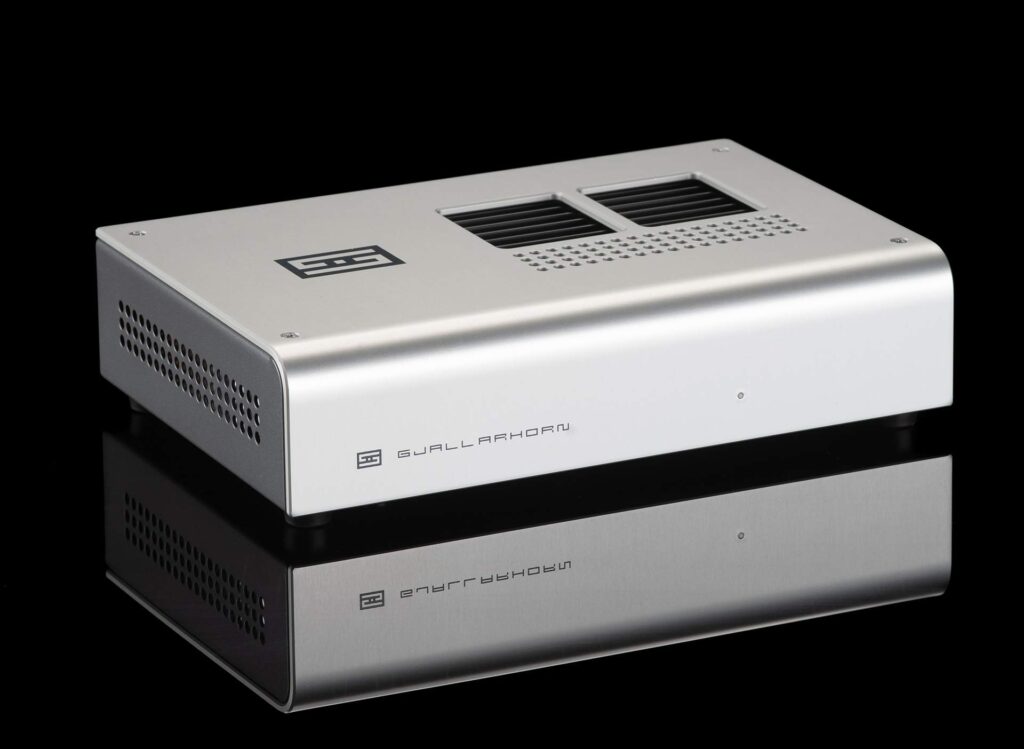
Nevertheless, the amplifier offered a neutral presentation, it was fast and nimble for use as a near-field amplifier. Sometimes, in that same position, a larger, more powerful, more general use HiFi amplifier can appear to be a tad sluggish.
Hence, for the Gjallarhorn? For a smaller room, on a desktop but always at a reduced distance from your ears to the speaker? That’s an ideal arrangement and as such? This is an ideal amplifier.
SCHIIT GJALLARHORN POWER AMPLIFIER
Price: £300
Website: www.schiit.co.uk
GOOD: near-field use, clarity, bass impact, wide soundstage
BAD: nothing
RATING: 8
